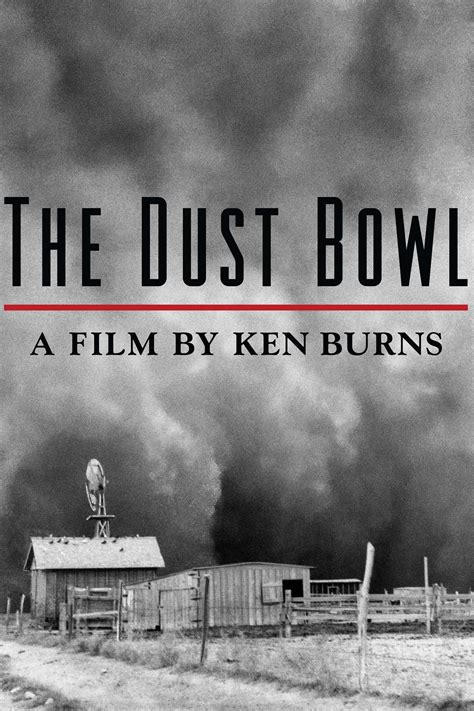The Dust Bowl

Description:
The Dust Bowl is a documentary film directed by Ken Burns that explores the environmental and human catastrophe of the 1930s in the American Midwest. Through vivid storytelling and archival footage, the film chronicles the severe dust storms, economic hardship, and the resilience of the people affected by one of the worst man-made ecological disasters in American history. The documentary also highlights the lessons learned and the importance of sustainable farming practices.Keywords:
Drought, Documentary, History, Environment, Ecology, American MidwestWhat is the dust bowl and why did it happen?
The Dust Bowl was a severe ecological disaster that occurred in the 1930s in the American Great Plains, primarily affecting states like Oklahoma, Texas, and Kansas. It was caused by a combination of severe drought and poor agricultural practices, including over-farming and lack of crop rotation, which depleted the soil's nutrients and stability. High winds then swept away the dry, loose topsoil, creating massive dust storms. This environmental catastrophe led to significant economic hardship, displacement of families, and changes in farming practices in the region.
What finally ended the Dust Bowl?
The Dust Bowl, a severe drought and ecological disaster in the 1930s, was ultimately alleviated by a combination of factors. Key among them were improved agricultural practices, such as crop rotation and contour plowing, which helped restore soil health. Additionally, increased rainfall in the late 1930s and early 1940s played a crucial role in replenishing the parched land. Government programs, such as the Soil Conservation Service, also contributed to sustainable farming practices that prevented further erosion and helped rehabilitate the affected areas.
How long did the Dust Bowl last?
"The Dust Bowl" refers to a severe environmental disaster that affected the Great Plains of the United States during the 1930s, primarily between 1930 and 1936, though its effects lingered into the early 1940s. This period was marked by drought, poor agricultural practices, and strong winds that led to widespread soil erosion, devastating crops and livelihoods. The disaster significantly impacted the economy and led to mass migrations, particularly to California, as families sought better living conditions.
What was the worst Dust Bowl in history?
The worst Dust Bowl in history occurred during the 1930s, primarily affecting the Southern Plains of the United States, including parts of Oklahoma, Texas, Kansas, Colorado, and New Mexico. This environmental disaster was characterized by severe drought and poor agricultural practices, leading to massive dust storms that devastated farmland and displaced thousands of families. The most notorious storm, known as "Black Sunday," struck on April 14, 1935, symbolizing the peak of the crisis. The Dust Bowl had significant social and economic impacts, contributing to the Great Depression.
Explore More Categories:
Individuality Monarchy Piracy Supernatural Thriller Self Sufficiency Allegory Tribal Cosmic Battle Post Impressionism Prequel Adrenaline Family Disapproval Sustainability Oppenheimer Negotiation Outsider Political Intrigue Transgender Ghosts Boxing Drama Misunderstanding 1920s Resource Scarcity Character Driven